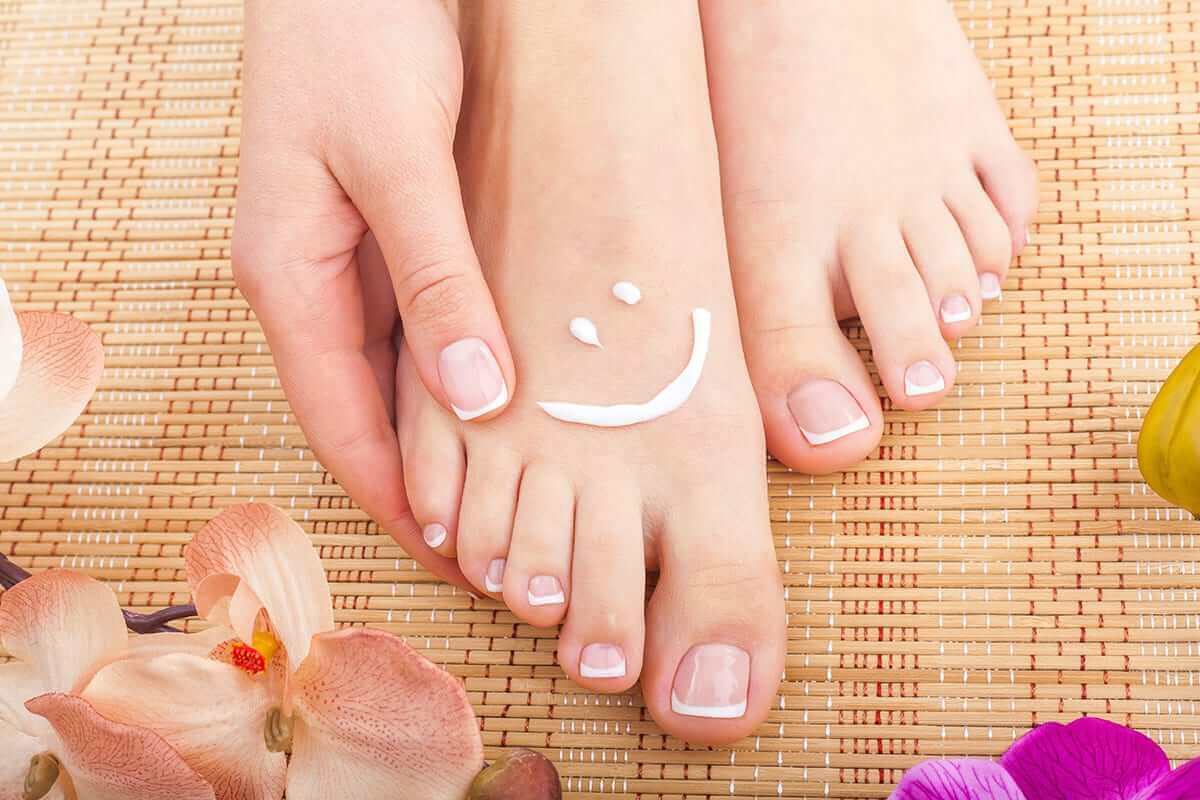This week during diabetes management teaching sessions, I interacted with 3 new onset Type 2 diabetes patients who were mystified about dealing with “foot awareness” and the need for scrupulous foot care. Since diabetes education can be overwhelming at the initial visit, I try to keep each aspect of care very simple and basic. The patients are generally offered future educational visits, depending on the insurance plan, which address more detailed and specific recommendations. We are in the middle of winter and although many of us have experienced a particularly mild winter season, I thought it was a perfect time to review basic guidelines for foot care when you have diabetes.
Unfortunately, uncontrolled diabetes still remains the leading cause of “below the knee amputations.” Patients are shocked when they hear this since they “do not equate high blood sugars with foot complications.” Foot care should be one of the main areas of concern for people with diabetes. Due to nerve ending damage, called neuropathy, and poor circulation which results in lack of blood flow, patients need to be focused on basic foot care information.
Each season brings different situations for diabetes feet. Winter rain, snow, sleet and ice all lead to foot dampness. When moisture collects around the feet, bacteria can form and lead to foot infections. According to The American College of Foot and Ankle Surgeons “patients should remove damp or wet shoes and socks and dry feet immediately.” Wetness between the toes can lead to fungal problems. Wearing moisture wicking socks can be beneficial to protect feet from certain winter conditions.
Cold weather may also enhance numbness especially in those with existing neuropathy which could increase the risk of foot injury. During the winter season, skin tends to dry out more quickly due to lack of humidity and indoor or car heating elements. Using a white, fragrance-free lotion, cream, balm or ointment is helpful to prevent cracks and fissures on the soles and tops of the feet which may allow in bacteria. There are specific diabetes foot care creams but they are not necessarily better. A good winter walking shoe should be waterproof or water resistant and fit well with a pair of blended fabric socks. The toe box needs to be wide enough to prevent cramping and avoid the formation of blisters or calluses. In the long term, a shallow toe box can cause bunions and hammer toes. The shoe should have a rubber sole with grooves to help prevent slipping or falling. It should contain a roll bar “to help stabilize the foot from rolling when it strikes the ground. Since neuropathy can cause tingling and numbness, it is important for patients with diabetes to avoid direct sources of heat even in the winter. Stay away from heating blankets, heating pads and heated shoe inserts which could cause a burn. If feet are especially cold after coming indoors, gently massage feet to encourage blood flow to naturally warm feet. Walking in the cold with neuropathy and numbness may lead to falls due to reduced sensation. Winter-time walking injuries often include twisted and sprained ankles, as well as broken toes or broken bones in the feet from misplaced steps. Avoid high heels especially during the winter months to lower the risk of falling. If you do fall or twist an ankle do not self-treat. Go to an urgent care or emergency room for prompt treatment as delaying treatment could lead to lasting problems. For short-term intervention when an injury does occur it is best to use the acronym RICE which stands for Rest, Ice, Compression and Elevation and call your physician.
Guidelines for all seasons
Check Feet Daily
Although this may sound silly when you have full sensation in your feet, it is important to get into a daily routine of looking at your feet just like brushing your teeth. Use bath or shower time and inspect all parts of your feet. Look between your toes for open skin, cuts or fungus. Check the soles of your feet. If you can’t physically reach or visualize them, then purchase a long-handled, telescopic mirror for proper visualization. Check for open wounds, redness, blisters and changes in skin temperature. If you find a problem contact your physician.
Cleanliness
Keep feet washed daily with warm, tepid water and mild soap. There is no need to use hot water or a strong anti-bacterial soap which may cause irritation. Change socks daily and rotate shoes to let them dry out.
Prevention
The best way to prevent neuropathy or reduced blood flow when you have diabetes is to keep blood sugars controlled. According to The ADA, the American Diabetes Association, “control is still considered an A1C of under 7%.” Check with your physician since A1C levels need to be individualized based on other medical issues. Never smoking or quitting smoking is the next best recommendation for prevention.
Take Your Shoes and Socks Off
So many patients look at me blankly when I ask them if their MD checks their feet. A complete physical for a patient with diabetes should include a foot exam. Foot and ankle pulses should be monitored for blood flow. On a yearly basis, feet should be evaluated with a mono-filament for nerve sensation. Most doctors also use a tuning fork and check reflexes to complete the exam.
The 10 Commandments of Foot Care
- Do not go barefoot indoors or out: When working in the garden, wear hard soled closed shoes instead of flip flops or sandals for better protection. Wear supportive sneakers or walking shoes when exercising. Wear slippers or socks with grips when in the home and wear water shoes while in the pool, lake or ocean. This is all to prevent unnecessary foot injuries.
- Do not soak feet: As appealing as it sounds after being on your feet all day, people with diabetes should avoid foot soaking. Soaking can lead to increased risk of fungus which diabetes already causes. You can take a short bath but do not spend much time soaking.
- Do not perform your own foot surgery: Many patients have uncomfortable corns, calluses or blisters which should be treated professionally by a foot doctor called a podiatrist. Do not buy OTC kits to do “bathroom surgery.” This includes correcting an ingrown toe nail which can become a dangerous situation.
- Do not go without socks: Certain occasions may call for wearing sandals which should cover most of your feet. When wearing closed shoes, wear socks to add a layer of protection between you and the shoe. The padding may protect from foot injury. Use blended socks instead of all cotton which allows the feet to perspire and the nylon fiber to wick away the perspiration.
- Do not put lotion between toes: Putting on anything that raises moisture between toes could lead to fungus or Athlete’s foot. Use corn starch powder or a powder spray to keep the area dry and for a cooling affect.
- Do not cut toenails with a scissor: Use a nail clipper. Do not angle nails when clipping, clip straight across. Use a nail file or Emery board to round edges.
- Do shop for shoes: Do this late in the day when your feet are more swollen, especially if you have kidney or heart disease. Do know when it is time to get rid of old shoes that are worn out, collapsing or ripped inside which can create friction.
- Do have your feet measured: Have them measured each time you purchase shoes since foot size can change as we age as well as gain or lose weight. Buy shoes based on the larger foot, since most people do not have equal foot size, and ask for a pad to prevent the smaller foot from moving around in the shoe causing irritation.
- Do break in shoes slowly: Especially if they are dress or hard leather shoes. Start by wearing for one hour and slowly increasing. Watch out for synthetic or plastic shoes which do not breathe. Mesh shoes allow for more comfort and ability to let the foot breathe.
- Do treat small cuts or scrapes: Use an antibiotic salve and bandage covering and watch to see if red streaks develop or if it is not healed in 2-3 days. Follow up with medical care if it is not improving.
Safe foot care is easy to accomplish when you know what to do. Preventing foot problems including amputation can be achieved when you use the right tools and guidelines.
Have a question or comment? Post below or email me at RKleinman@adwdiabetes.com if you would like to share them with ADW diabetes.
NOTE: Consult your Doctor first to make sure my recommendations fit your special health needs.








Leave A Comment